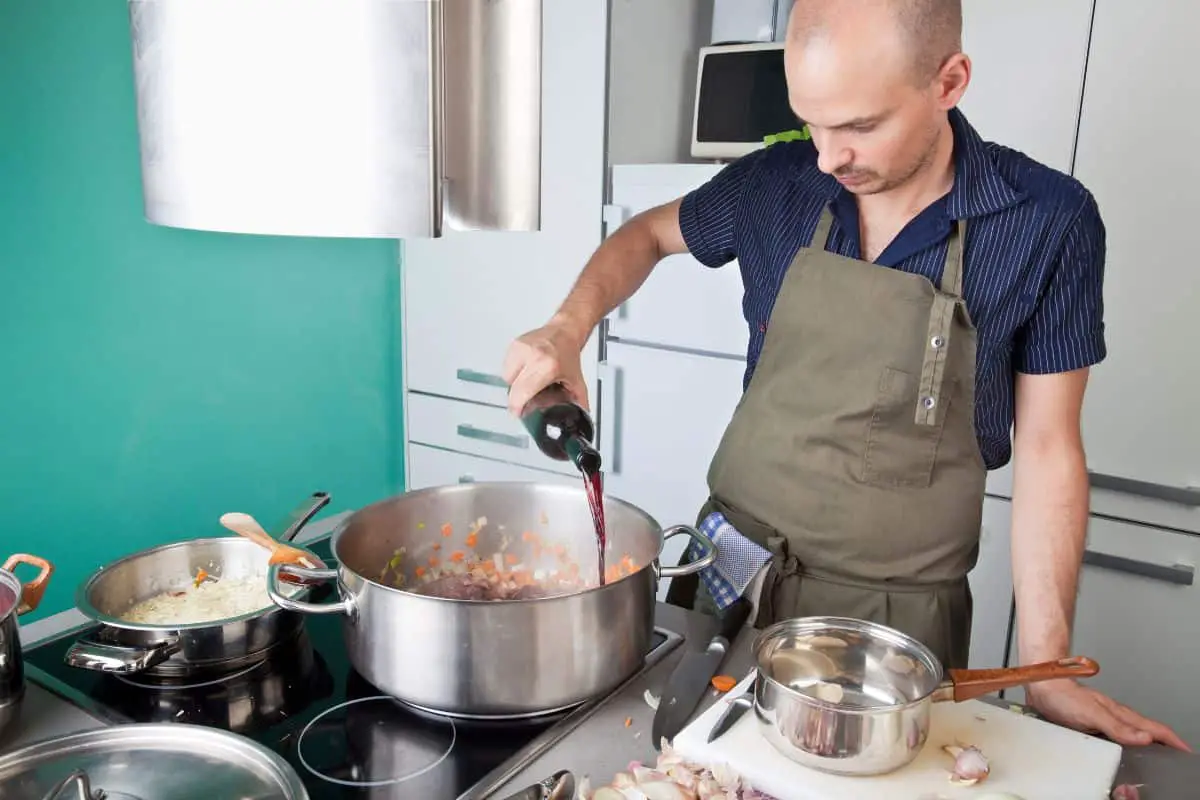Are you a beginner in the world of wine? Choosing a good bottle of wine can be intimidating, especially when you don’t know where to start. With so many options out there, it’s easy to feel overwhelmed. But don’t worry, we’ve got you covered! In this article, we will help you choose the best wines for beginners.
Understanding Wine Basics
Before we dive into the different types of wines that are best for beginners, it’s important to understand some basic wine terminology.
- Grape Varietals: Wines are typically made from specific grape varieties. Some common grape varietals include Chardonnay, Cabernet Sauvignon, and Pinot Noir.
- Tannins: Tannins are compounds found in wine that give it a dry, bitter taste. Wines with high tannins include Cabernet Sauvignon and Nebbiolo.
- Acidity: Wines with high acidity have a tart or sour taste. Some wines with high acidity include Sauvignon Blanc and Pinot Noir.
- Body: The body of a wine refers to its weight and texture. Wines can be light-bodied, medium-bodied, or full-bodied.
Understanding these terms will help you choose the right wine for your taste preferences.
Best White Wines for Beginners
If you’re just starting out, white wines are a great place to begin. They are typically lighter and more refreshing than red wines, making them a good choice for warm weather or lighter meals. Here are a few of the best white wines for beginners:
- Sauvignon Blanc: Sauvignon Blanc is a light-bodied, crisp white wine with high acidity. It often has flavors of green apple, grapefruit, and grass.
- Pinot Grigio: Pinot Grigio is a dry, light-bodied white wine with flavors of lemon, lime, and green apple. It’s easy to drink and pairs well with a variety of foods.
- Chardonnay: Chardonnay is a medium to full-bodied white wine with a creamy texture. It often has flavors of vanilla and oak, and pairs well with richer foods like seafood or creamy pasta dishes. If wine was a symphony, Chardonnay would be its first few delightful notes. It’s like a first love, often recalled fondly for its rich and full-bodied flavors.
- Riesling – As refreshing as a morning breeze on a hot summer day, Riesling carries fruity, floral notes with a vibrant acidity that’s as inviting as a cheerful friend.

Our Pick for Best White Wine for Beginners: New Zealand Sauvignon Blanc
If you’re looking for a white wine that is both easy to drink and packed with flavor, New Zealand Sauvignon Blanc is a great choice for beginners. Sauvignon Blanc is a grape varietal that is well-suited to the cool climate and mineral-rich soil of New Zealand, resulting in wines that are crisp, refreshing, and bursting with tropical fruit flavors.
New Zealand Sauvignon Blanc is often described as having notes of passionfruit, grapefruit, and melon, with a zesty acidity and a long finish. It’s a versatile wine that pairs well with a variety of foods, from seafood to salads to spicy dishes.
New Zealand Sauvignon Blanc is widely available and typically affordable, making it a great choice for those who are just starting out in the world of wine. Look for wines from well-known New Zealand wineries like Cloudy Bay, Kim Crawford, or Oyster Bay to start with.
Overall, New Zealand Sauvignon Blanc is a delicious and accessible white wine that is perfect for beginners who want to explore the world of wine.
Best Red Wines for Beginners
If you’re ready to venture into the world of red wine, there are plenty of options for beginners. Here are a few of the best red wines to start with:
- Pinot Noir: Pinot Noir is a light to medium-bodied red wine with low tannins and high acidity. It often has flavors of cherry, raspberry, and earth. Imagine yourself in a wild berry forest, that’s the essence of Pinot Noir. Its light body and versatile taste make it a fantastic entry point to the realm of red wines.
- Merlot: Merlot is a medium-bodied red wine with a smooth texture. It often has flavors of plum and black cherry. Known as the “beginner’s red”, Merlot’s soft, ripe fruit flavors are easy on the palate. Picture it as an amicable companion who never outstays their welcome.
- Zinfandel: Zinfandel is a medium to full-bodied red wine with flavors of blackberry and spice. It’s a good choice for those who prefer a fruitier red wine.
- Malbec – Originating from Argentina, Malbec is like the enticing rhythm of a Tango dance. Its dark, rich fruits, and smooth tannins make it a delightfully accessible red wine for beginners.
Our Choice for Best Red Wine for Beginners: Argentinian Malbec
If you’re a beginner looking to try a red wine that is both approachable and delicious, Argentinian Malbec is an excellent choice. Malbec is a grape varietal that originated in France but has found a new home in Argentina, where it has become one of the country’s signature wines.
Argentinian Malbec is known for its dark fruit flavors, such as blackberry and plum, as well as its velvety tannins and smooth finish. It’s a medium-bodied wine that is not too heavy, making it a great choice for those who are new to red wine.
One of the reasons Argentinian Malbec is so popular is that it pairs well with a wide range of foods, from grilled meats to pasta dishes to spicy cuisine. It’s also widely available and relatively affordable, making it a great choice for beginners who are just starting to explore the world of wine.
Look for wines from well-known Argentinian wineries like Catena Zapata, Norton, or Luigi Bosca to start with. When selecting a bottle of Argentinian Malbec, pay attention to the wine’s vintage, as this can have a significant impact on the wine’s flavor and quality.
Overall, Argentinian Malbec is a delicious and accessible red wine that is perfect for beginners who want to explore the world of wine.

Best Sparkling Wines for Beginners
If you’re celebrating a special occasion or just want to try something new, sparkling wines are a fun option. Here are a few of the best sparkling wines for beginners:
- Prosecco: Prosecco is a light-bodied sparkling wine from Italy. It’s typically dry and has flavors of green apple and pear.
- Cava: Cava is a sparkling wine from Spain. It’s often made using the same method as Champagne, but at a more affordable price point. It has flavors of citrus and almond.
- Champagne: Champagne is a sparkling wine from the Champagne region of France. It’s typically made using Chardonnay, Pinot Noir, and Pinot Meunier grapes. It’s a great choice for special occasions.
Our Choice for Best Sparkling Wines: Prosecco
If you’re looking for a sparkling wine that is both affordable and delicious, Prosecco is an excellent choice. Prosecco is a light-bodied, refreshing wine that comes from the Veneto region of Italy. It is made using the Glera grape varietal and is known for its delicate flavors and aromas.
Prosecco is often described as having flavors of green apple, pear, and citrus, with a light and bubbly texture. It’s a versatile wine that can be enjoyed on its own or paired with a variety of foods, such as appetizers, seafood, or brunch dishes.
One of the reasons Prosecco is so popular is that it is widely available and typically affordable, making it a great choice for beginners who are just starting to explore the world of wine. Look for Prosecco from well-known Italian wineries like Mionetto, La Marca, or Ruffino to start with.
When selecting a bottle of Prosecco, pay attention to the wine’s sweetness level, as this can have a significant impact on the wine’s flavor. Prosecco can range from extra brut (very dry) to demi-sec (slightly sweet), so it’s important to choose a wine that matches your taste preferences.
Overall, Prosecco is a delicious and accessible sparkling wine that is perfect for beginners who want to explore the world of wine. Whether you’re celebrating a special occasion or simply enjoying a glass with friends, Prosecco is a wine that is sure to please.
Wine Pairing
Pairing wine with food can be intimidating, especially for beginners. Here are some general tips for pairing wine with food:
- Match the intensity: Pair lighter wines with lighter foods and heavier wines with heavier foods.
- Pair similar flavors: Look for wines that have similar flavor profiles to the food you’re eating. For example, a fruity wine might pair well with a fruit-based dessert.
- Pair by contrast: Sometimes contrasting flavors can work well together. For example, a dry wine might pair well with a spicy dish to balance out the heat.
- Pair by region: Try pairing wines from the same region as the food you’re eating. For example, a Chianti might pair well with Italian cuisine.
Here are some specific recommendations for pairing the wines listed in this article:
- Sauvignon Blanc: Pair with seafood, salads, or dishes with tangy sauces.
- Pinot Grigio: Pair with light pasta dishes, seafood, or salads.
- Chardonnay: Pair with rich seafood dishes, chicken, or creamy pasta dishes.
- Pinot Noir: Pair with salmon, roasted chicken, or dishes with earthy flavors.
- Merlot: Pair with grilled meats, pasta dishes with tomato-based sauces, or dishes with herbs like rosemary or thyme.
- Zinfandel: Pair with barbeque, spicy dishes, or hearty stews.
- Prosecco: Pair with appetizers, seafood, or brunch dishes.
- Cava: Pair with tapas, fried foods, or dishes with garlic and herbs.
- Champagne: Pair with oysters, caviar, or rich cheeses.
Regions and Styles
There are many different wine regions and styles to choose from, each with their own unique characteristics. Here are a few examples:
- Burgundy: Known for producing high-quality Pinot Noir and Chardonnay.
- Bordeaux: Famous for producing Cabernet Sauvignon and Merlot blends.
- Napa Valley: A well-known region in California that produces Cabernet Sauvignon, Chardonnay, and other varietals.
- Rioja: A region in Spain that produces Tempranillo-based wines.
- Tuscany: Known for producing Chianti and other Sangiovese-based wines.
In addition to specific regions, there are also different styles of wine to consider, such as natural wine, organic wine, and biodynamic wine. Understanding these different styles can help you find the type of wine that best suits your tastes.
Wine Tasting Tips
Tasting wine is a skill that takes practice, but there are a few tips to keep in mind:
- Look: Take a good look at the wine’s color, clarity, and viscosity.
- Smell: Give the wine a good sniff and try to identify the different aromas.
- Taste: Take a small sip and let it coat your tongue. Try to identify the different flavors and textures.
- Evaluate: Consider the wine’s overall balance, complexity, and finish.
Remember, tasting wine is a personal experience, so don’t be afraid to trust your own taste buds.

What Some People Report Are the Best Wines for Beginners
While the world of wine can be intimidating, there are many great options for beginners who are just starting to explore the world of wine. Here are a few wines that people often report as being great choices for beginners:
- Pinot Grigio: This light-bodied white wine is easy to drink and pairs well with a variety of foods, making it a popular choice for beginners.
- Sauvignon Blanc: Another white wine that is known for its refreshing flavors and easy drinkability, Sauvignon Blanc is a great choice for those who are just starting to explore the world of wine.
- Pinot Noir: This light- to medium-bodied red wine is known for its fruit-forward flavors and soft tannins, making it an approachable choice for beginners.
- Merlot: Merlot is a medium-bodied red wine that is known for its smooth and easy-drinking nature. It’s a great choice for those who are new to red wine.
- Cabernet Sauvignon: While Cabernet Sauvignon can be more full-bodied and tannic than other wines on this list, it’s still a popular choice for beginners due to its bold and flavorful nature.
These wines are widely available and typically affordable, making them great choices for beginners who are just starting to explore the world of wine. Remember, everyone’s tastes are different, so don’t be afraid to try a variety of wines to find the ones that best suit your preferences.
In addition to these wines, there are many other great options for beginners to explore. Don’t be afraid to ask for recommendations from friends, family, or a local wine store, as they can often provide valuable insight into the world of wine.
Best Way to Make Wine Taste Better for Beginner Wine Drinkers
For many people, wine can be an acquired taste. If you’re a beginner and find that you don’t love the taste of wine right away, there are a few things you can do to make it more enjoyable.
One of the best ways to make wine taste better is to serve it at the right temperature. Generally, white wines should be served chilled, while red wines should be served at room temperature. When wine is served at the right temperature, it can bring out its best flavors and aromas.
Another way to make wine taste better is to pair it with food. As we discussed earlier in the article, pairing wine with the right foods can enhance its flavor and make it more enjoyable. Look for foods that complement the flavors in the wine, such as cheeses, fruits, or meats.
If you’re still finding that you don’t love the taste of wine, you might want to try a sweeter wine. Wines like Moscato or Riesling tend to be sweeter and can be a great starting point for those who are new to wine.
Finally, don’t be afraid to experiment with different varietals and styles of wine. Everyone’s tastes are different, so it’s important to try a variety of wines to find the ones that you enjoy the most.
Overall, there are many ways to make wine taste better for beginner wine drinkers. By serving wine at the right temperature, pairing it with the right foods, and trying different varietals and styles, you can begin to explore the world of wine and find the wines that best suit your tastes.
Wine Varietals to Avoid for Beginners
While the world of wine is vast and inclusive, some varietals might be overwhelming for beginners. Imagine diving into the deep end of a pool before you’ve learned to swim; it’s not impossible, but it can be daunting.
Here’s a brief list of wine varietals you might want to approach with caution as you begin your wine journey:
Red Wines to Approach with Caution
- Cabernet Sauvignon – With its heavy tannins and bold flavors, Cabernet Sauvignon can feel like a high-speed roller coaster ride. You might enjoy it eventually, but it’s not the best ride to start with.
- Nebbiolo – This grape varietal, famous for its role in Barolo and Barbaresco wines, carries intense tannins and high acidity. It’s like a grand, complex novel that requires seasoned reading skills.
White Wines to Approach with Caution
- Gewürztraminer – Known for its intense lychee and rose aromatics, Gewürztraminer can be an acquired taste. Picture it as an exotic fruit: exciting for some, but a bit overwhelming for others.
- Chenin Blanc – This varietal, while versatile, can exhibit a broad range of flavors from mineral to fruity. It’s like a chameleon, a fascinating creature, but one that might confuse beginners.
Remember, the world of wine is all about exploration. These “cautionary” varietals are not off-limits; they’re just a bit more challenging. Over time, as your palate matures, you might find yourself drawn towards these complex, nuanced wines.
Budget-Friendly Wines
Wine doesn’t have to be expensive to be good. Here are a few budget-friendly wines to try:
- Côtes du Rhône: A red wine blend from the Rhône Valley in France that is affordable and easy to drink.
- Malbec: A red wine from Argentina that is often reasonably priced and pairs well with grilled meats.
- Riesling: A white wine that can be found at a variety of price points, but is often affordable and pairs well with spicy foods.
- Cava: As mentioned earlier, Cava is an affordable sparkling wine from Spain that is a great alternative to Champagne.
- Sauvignon Blanc: Sauvignon Blanc is often priced reasonably and is a great choice for beginners.
Remember, there are many affordable wines out there, so don’t be afraid to experiment with different varietals and price points.
- How to Learn Wine Tasting: Essentials for Beginners - March 10, 2024
- How to Learn to Like Wine: Cultivating an Appreciation for the Vintner’s Art - March 10, 2024
- Thanksgiving Sangria: A Flavorful Twist to Your Holiday Table - August 27, 2023








